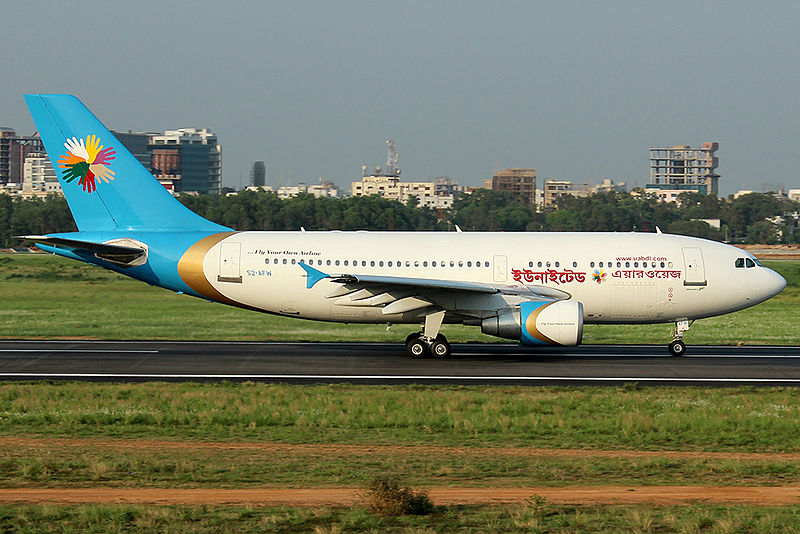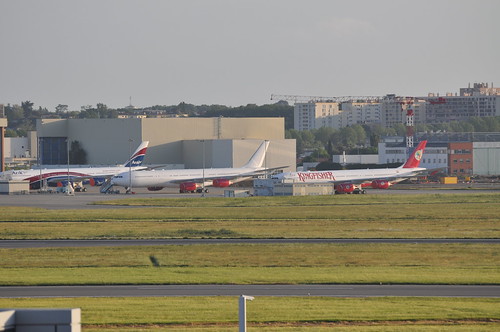When Gurugaon -based low-cost carrier (LCC) SpiceJet announced its latest round of international expansion, it continued the recent shift in strategy by India’s second largest LCC. Amongst the new routes announced or filed for (according to a report from the Mint, India’s local Wall Street Journal affiliate) were Madurai-Colombo, Delhi-Dhaka-Rangoon/Yangon, Delhi-Riyadh, Delhi-Guangzhou, and Trivandrum-Male. Of these, Madurai-Colombo has already been announced with SpiceJet’s Q400 turboprop with service commencing September 20th. The schedule for Madurai-Colombo services is as follows:
SG3314 IXM-CMB 1230-1345 DH8 Daily
SG3316 CMB-IXM 1435-1520 DH8 Daily
The service is the first ever international service for Madurai, a town with population of about 1.5 million people in Southern Tamil Nadu whose airport served 511,000 passengers in fiscal year 2011-2012 and recently built a new terminal in 2010. The primary ties between Madurai and Colombo are ethnic ones (given the large Tamilian population in Sri Lanka), though there are strong business links as well, and as Madurai’s first international service, demand should be strong. SpiceJet is currently the largest operator at Madurai Airport with service to 6 Indian destinations and Colombo.
The flight timings seem a bit long given that the distance between Colombo-Madurai is only 350 kilometers, which requires only 35-45 minutes for the Q400 to traverse and that neither Colombo nor Madurai is so congested as to require a long time for takeoff and landing or taxiing at the airport.
Choosing to add new Q400 routes internationally is a smart move for SpiceJet. There are several SAARC routes, especially from the South to Sri Lanka and from the North to Bangladesh, Nepal, or even Pakistan that could one day be served by SpiceJet. Especially if SpiceJet focused these services on Tier 2 and 3 cities, it would likely generate strong demand by not forcing customers in these cities to waste time connecting at a Metro airport.
SpiceJet is also considering Trivandrum-Male service with the Q400, a move that fits with our suggested strategy. The route would be supported in part by the burgeoning medical tourism links between Trivandrum and the Maldives. However, making this route work may be tough, given that local carrier Maldivian serves the route with 37 and 50 seat Bombardier Dash 8 Q200/300 turboprops while Air India operates the route with its A320 family aircraft.
As for the other international routes, these will all be performed with SpiceJet’s fleet of Boeing 737 jets. Service to Dhaka has not yet been approved by India’s Ministry of Civil Aviation, nor has the extension to Yangon. Yangon currently sees Air India service only to Kolkata and Gaya (a Buddhist centre akin to Tirupathi for Hindus), thus SpiceJet would be the first airline to offer direct Delhi-Yangon service for a market that is set to boom assuming that the hard-line Myanmar government continues its recently enacted policy of social and economic reforms.
Meanwhile, Delhi-Riyadh is a huge ethnic market with more than enough room for SpiceJet to enter the market after full service carrier Kingfisher Airlines withdrew such service. But it is the Delhi-Guangzhou service which is the best move. No Indian airline serves Guangzhou today, China’s 3rd most important city and its manufacturing capital (the Guangdong province, which Guangzhou is part of, had a GDP in 2011 of close to US $900 billion, which is 20% of that of the entire Indian nation, despite having just 7% of the population). Most Indian small and medium businesses source their goods from the Guangzhou area, and SpiceJet should see excellent demand on the route. SpiceJet should also consider starting Chennai-Guanzhou, given that Chennai is India’s largest manufacturing hub and has strong business ties to Guangdong province.
Bangalore Aviation feels that it was smart for SpiceJet to continue to expand its growing international presence (currently they serve Dubai, Kathmandu, and Colombo). Even though domestic pricing pressures have temporarily receded, the presence of several new entrants domestically means that capacity discipline may yet again go out the window. Meanwhile, the collapse of Kingfisher means that international fares have shot upwards, leaving room for SpiceJet to come into the market and undercut the existing players with its lower costs. In particular, SpiceJet should continue to expand with new routings (like to Guangzhou and Yangon) that lack service from an Indian carrier. IndiGo has mostly chosen to service the existing major cities in the Gulf and Southeast Asia, and with lower costs than SpiceJet, it would do the latter well to avoid too much head to head competition.
Meanwhile, SpiceJet appears to have built up a strong portfolio of international destinations from its largest hub in Delhi, with services now to Dhaka, Colombo, Dubai, Riyadh, Kabul, Kathmandu, Yangon, and Guangzhou. As SpiceJet simultaneously expands its domestic presence in Delhi, we feel that the airline can succeed where Air India failed and build up a true regional hub at either Terminal 3 or Terminal 1D in Delhi. While it will take a lot of coordination with India’s Ministry of Civil Aviation to facilitate placement of FIS into Terminal 1, and especially to maximise international to international connections, this move would be strong for SpiceJet. Using its existing fleet of 737s, SpiceJet could continue to expand its services to the SAARC region, but also to Southeast Asia, the Gulf, and Western China.
Bangalore Aviation also suggests that SpiceJet invest in a fleet of around 10 Boeing 737-700 aircraft. These have longer range than SpiceJet’s existing 737-800s and would allow the airline to open services from Delhi to every major city in East Asia excluding Tokyo and Osaka (even Jakarta is within the range of the 737-700), as well as to all of Central Asia, Russia, most of Eastern Europe (including Warsaw, Kiev, and similar), and most of Northeast Africa. Truly leveraging Delhi’s location, SpiceJet could make a visionary move and become the dominant player in Delhi and beyond.










